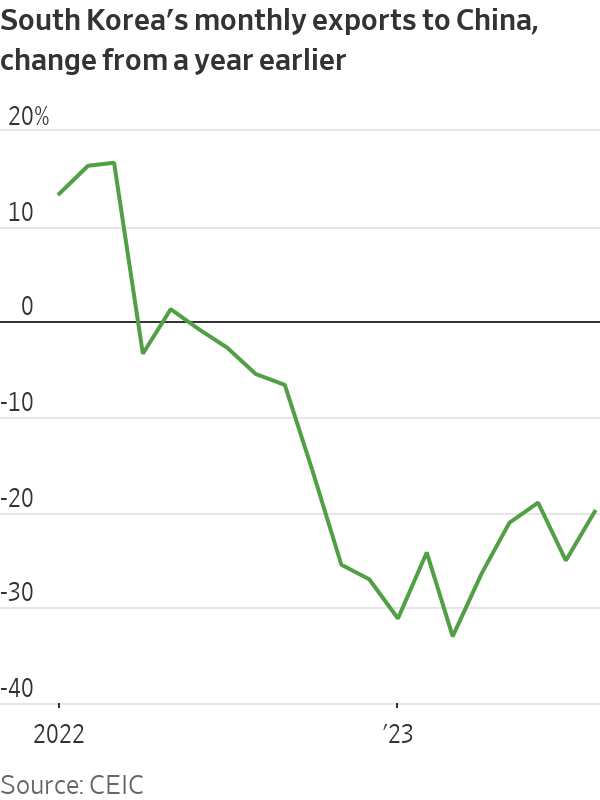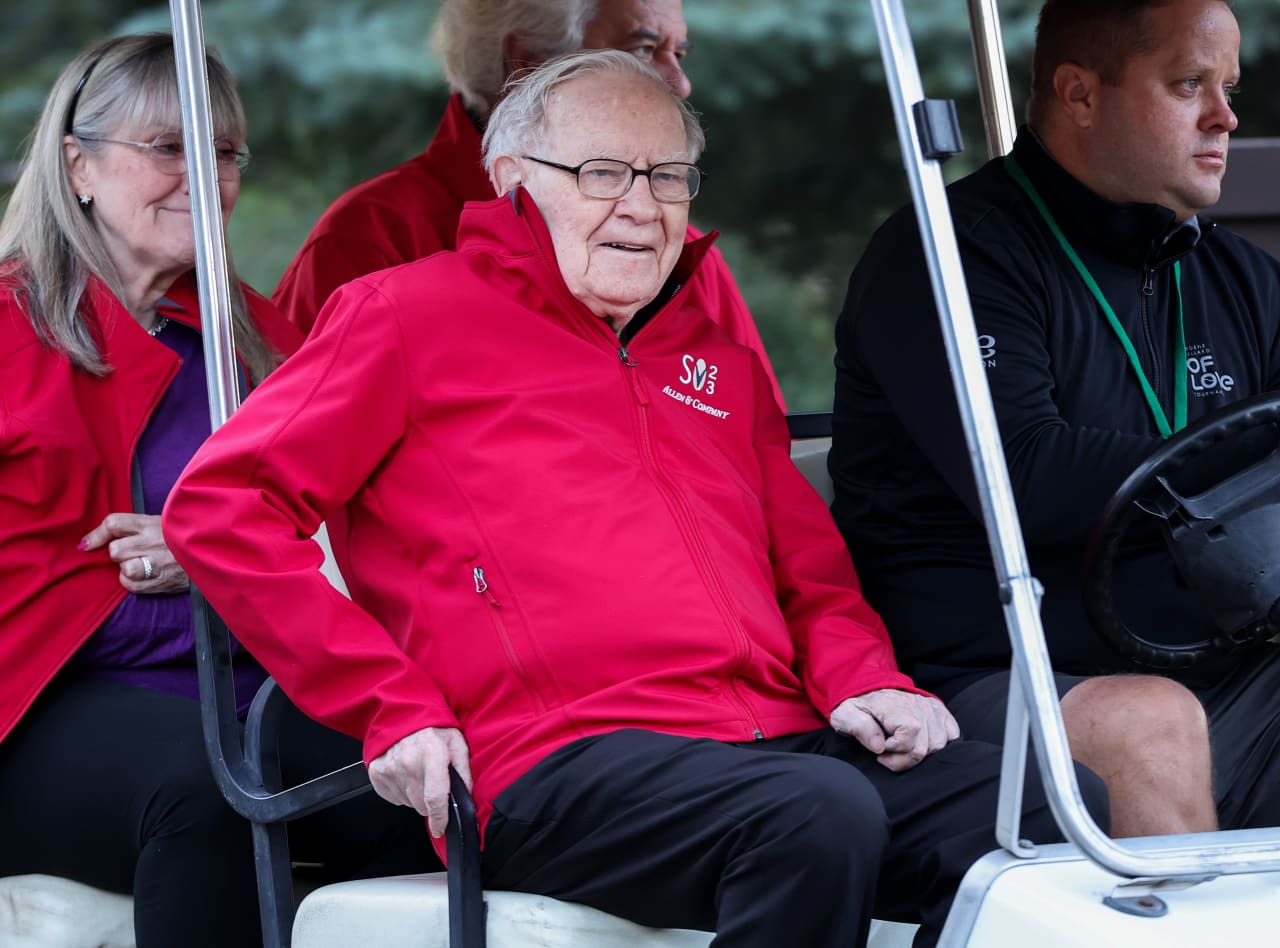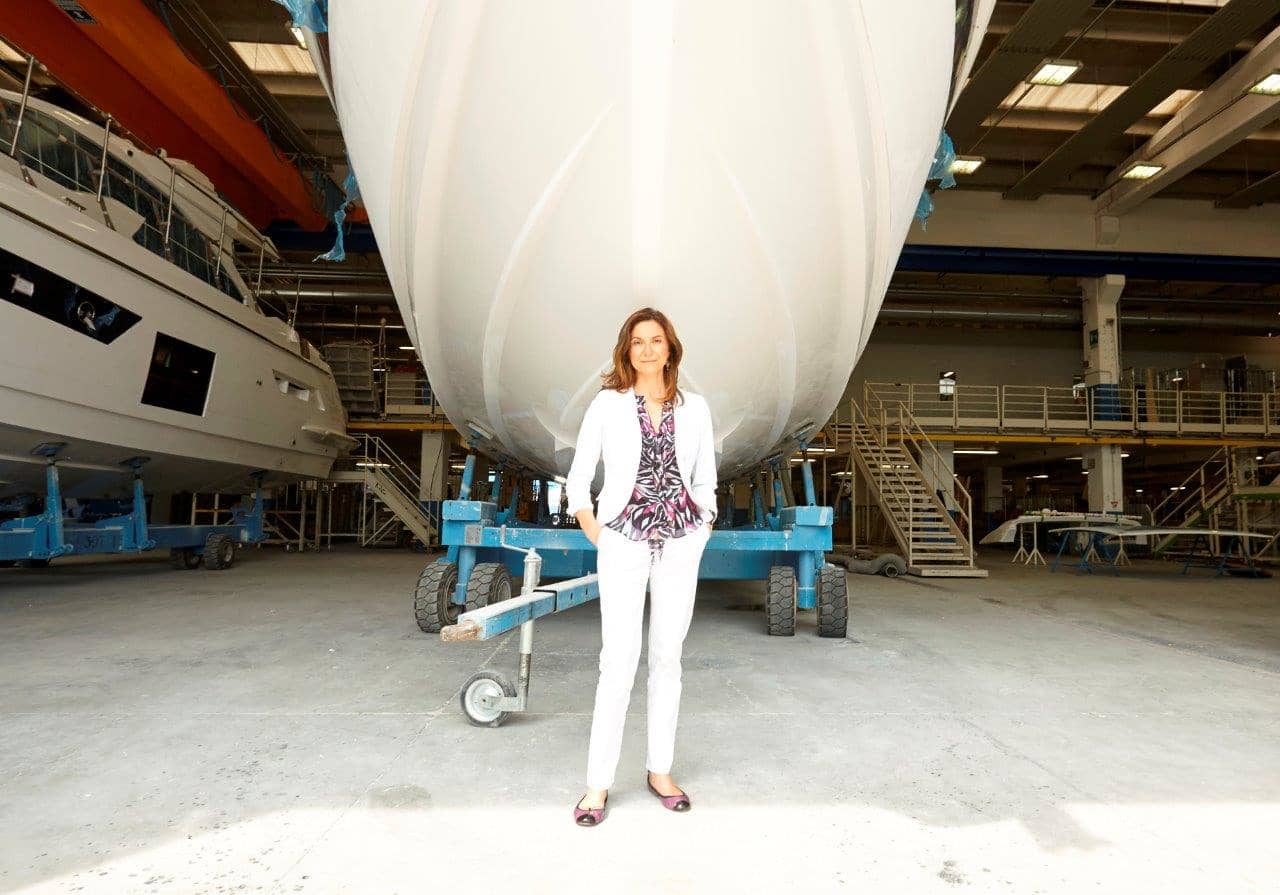China’s Neighbours Shouldn’t Cheer On Its Slowdown
Asian markets have been rallying even as China falters, but that may not last
China’s economic troubles have so far been a boon to other Asian markets. But if the world’s second largest economy continues to turn sour, things could start to look uglier for them too.
Major Asian stock markets have been doing well in 2023. Japan’s Topix index has gained 24% this year while Taiwan’s Taiex index has risen 18% and Korea’s Kospi is up 15%. That is in contrast to Chinese stocks: the MSCI China index has dropped 6%, despite a strong start of the year.
There are some fundamental reasons why Asian stocks outside of China have gone up. Buybacks and dividends are rising in Japan, while Warren Buffett’s endorsement gave the market another push. The hope of an eventual rebound in the semiconductor industry has lifted stocks in Taiwan and South Korea. But these markets also benefited from foreign investors fleeing Chinese stocks: markets such as Japan and South Korea have seen foreign inflows in recent months. Some multinationals have also been migrating manufacturing out of China and into other Asian countries to diversify their supply chains.
However, Goldman Sachs has noted that correlations between China and other markets in the region have risen lately, indicating potential concerns of spillover.
China is the top trading partner of many countries in the region like Japan and South Korea, and weak demand from China could ripple through to its neighbours. South Korea’s exports to China, accounting for roughly 20% of its total, fell 25% year on year in the first eight months of this year.

And falling investment in China—especially in the real-estate sector—could weigh on commodity prices. So far prices of commodities such as iron ore have been resilient this year as demand from sectors like autos and infrastructure have softened the blows from property construction. But commodity-exporting nations such as Australia, Malaysia and Indonesia could suffer if Chinese investment remains weak.
The confidence crisis in China could also hurt companies selling to the country’s consumers. The number of Chinese tourists, in particular, is still way down from pre-Covid levels for many countries like Japan and Thailand.
As China is the economic juggernaut in the region, the country’s pain is unlikely to be its neighbours’ gain for long.
 Copyright 2020, Dow Jones & Company, Inc. All Rights Reserved Worldwide. LEARN MORE
Copyright 2020, Dow Jones & Company, Inc. All Rights Reserved Worldwide. LEARN MORE
This stylish family home combines a classic palette and finishes with a flexible floorplan
Just 55 minutes from Sydney, make this your creative getaway located in the majestic Hawkesbury region.
Continued stagflation and cost of living pressures are causing couples to think twice about starting a family, new data has revealed, with long term impacts expected
Australia is in the midst of a ‘baby recession’ with preliminary estimates showing the number of births in 2023 fell by more than four percent to the lowest level since 2006, according to KPMG. The consultancy firm says this reflects the impact of cost-of-living pressures on the feasibility of younger Australians starting a family.
KPMG estimates that 289,100 babies were born in 2023. This compares to 300,684 babies in 2022 and 309,996 in 2021, according to the Australian Bureau of Statistics (ABS). KPMG urban economist Terry Rawnsley said weak economic growth often leads to a reduced number of births. In 2023, ABS data shows gross domestic product (GDP) fell to 1.5 percent. Despite the population growing by 2.5 percent in 2023, GDP on a per capita basis went into negative territory, down one percent over the 12 months.
“Birth rates provide insight into long-term population growth as well as the current confidence of Australian families,” said Mr Rawnsley. “We haven’t seen such a sharp drop in births in Australia since the period of economic stagflation in the 1970s, which coincided with the initial widespread adoption of the contraceptive pill.”
Mr Rawnsley said many Australian couples delayed starting a family while the pandemic played out in 2020. The number of births fell from 305,832 in 2019 to 294,369 in 2020. Then in 2021, strong employment and vast amounts of stimulus money, along with high household savings due to lockdowns, gave couples better financial means to have a baby. This led to a rebound in births.
However, the re-opening of the global economy in 2022 led to soaring inflation. By the start of 2023, the Australian consumer price index (CPI) had risen to its highest level since 1990 at 7.8 percent per annum. By that stage, the Reserve Bank had already commenced an aggressive rate-hiking strategy to fight inflation and had raised the cash rate every month between May and December 2022.
Five more rate hikes during 2023 put further pressure on couples with mortgages and put the brakes on family formation. “This combination of the pandemic and rapid economic changes explains the spike and subsequent sharp decline in birth rates we have observed over the past four years,” Mr Rawnsley said.
The impact of high costs of living on couples’ decision to have a baby is highlighted in births data for the capital cities. KPMG estimates there were 60,860 births in Sydney in 2023, down 8.6 percent from 2019. There were 56,270 births in Melbourne, down 7.3 percent. In Perth, there were 25,020 births, down 6 percent, while in Brisbane there were 30,250 births, down 4.3 percent. Canberra was the only capital city where there was no fall in the number of births in 2023 compared to 2019.
“CPI growth in Canberra has been slightly subdued compared to that in other major cities, and the economic outlook has remained strong,” Mr Rawnsley said. “This means families have not been hurting as much as those in other capital cities, and in turn, we’ve seen a stabilisation of births in the ACT.”
This stylish family home combines a classic palette and finishes with a flexible floorplan
Just 55 minutes from Sydney, make this your creative getaway located in the majestic Hawkesbury region.






















